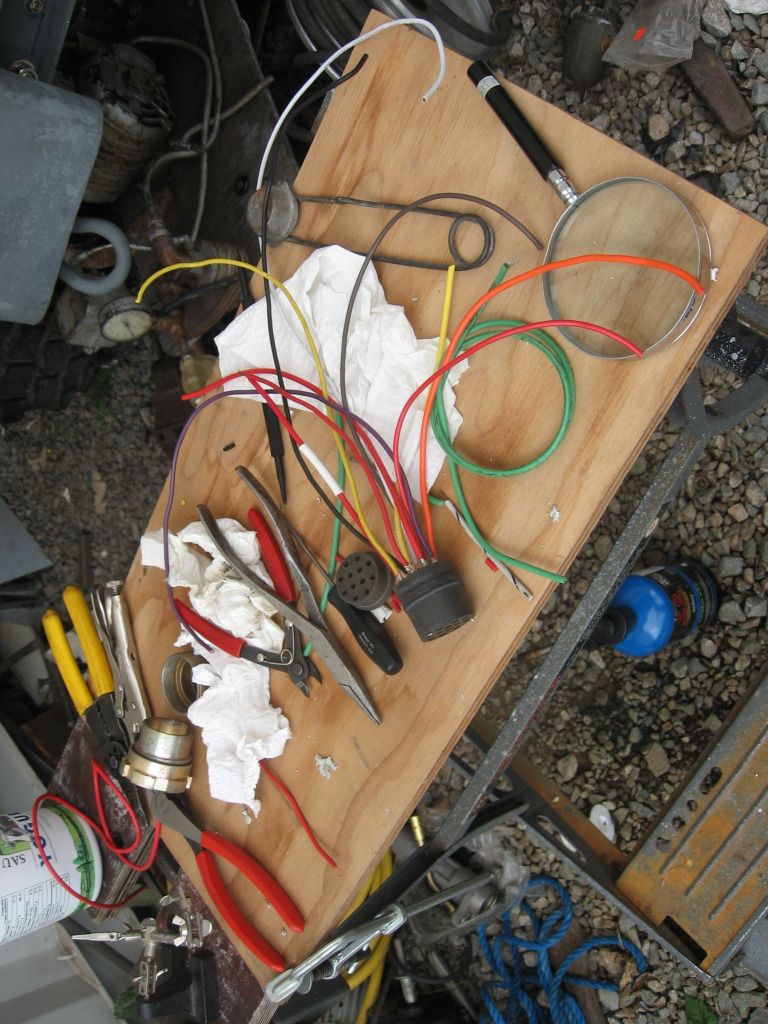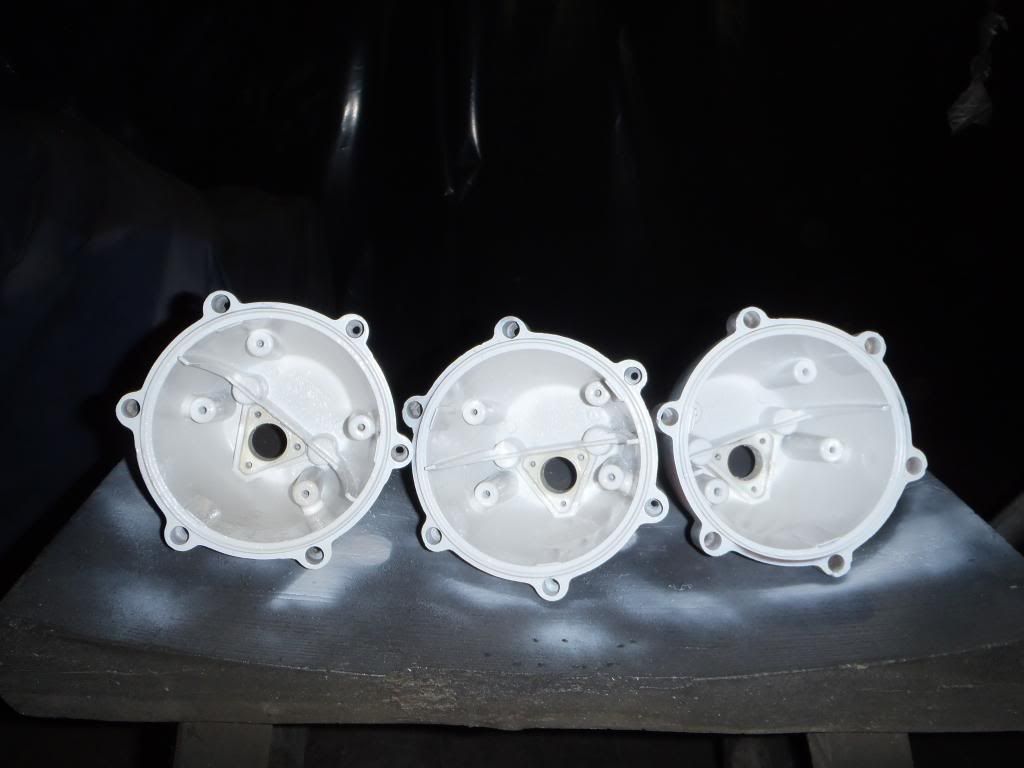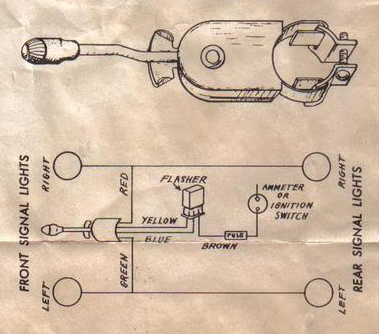I recently replaced the non-functioning Signal Stat 600, which was wired into the old Army controller box, with the relays and flasher on the firewall, with a 'Stat 900. So I already had a bunch of wires dangling down from behind the dash, when I unscrewed about 8 connections from the passenger, output side of the Army box.
My truck already had turn signals mounted on the front bumpers, and army lights on the rear of the truck. First, I wanted to see the front lights were burned out or not. So, bought 4 6 volt square batteries, the ones with the wire terminals made for dropping into a lantern. Taped them up into a square, then soldered wires from terminal to terminal in series, leaving then one pos lead, and one neg lead wire. Hence, a 24 volt test system. Then, unhooked the wires at the front turn signals, and with the two wires, made sure the bulbs worked, at 24 volts. The front signals have only a pos wire to them, they are grounded thru the fame back to the truck's batteries. I did not test the rear turn signals.
Then removed the 'Stat 600 from the steering wheel, finding some of the wires from that unit were frayed, and likely shorted. Sanded the paint off the steering shaft where the new 900 was going to be clamped, as it is grounded via the metal strap clamp around the steering shaft. Put the 900 on my workbench, and having dropped by a local NAPA and bought matching color wire spools, used weathertight crimp butt connectors with an short sleeve of shrink tubing around each connection. I think pretty vibration proof. I added about 3 feet or so of each wire to the 900's harness. Then wrapped all of this with polyethylene spiral protection, and routed my new "harness" carefully up under the dash and over to the area near the back of the glovebox.
Then, using the included diagram, used my new 24 volt testing system, one wire to a secure ground, the other I touched in turn each of the wires that went who knows where, and as my wife told me which light was on, marked them blue painter's tape. Then added a 15 amp fuse in a wire off one of the pos truck battery terminals, to power the bulb in the 900. I did have to get a NAPA 24 volt bulb to replace the 12V one that comes in the 900. Ordered a 24 volt flasher from Grainger, and after matching and shortening the wires from the 900 to my now marked truck wires, with again waterproof butt connectors, again with a short piece of shrink tubing over each, and crimped female spade connectors on the three wires to the flasher, and when I turned on my battery disconnect, the flasher worked great on all four corners.
I did not use the gray wire to the brake switch, and while the instructions show a wire not only to each corner, but also a wire connecting the two tail turn signals, I did not do that. My truck may already have that, I don't know. I did have to refer several times to the internet to determine which of the three wires went to which spade on the flasher.
Auto wiring is bewildering to me, but by keeping the wire colors the same, it all worked out ok.
As usual, here is a picture. I was at Ft. Riley for about a month before I deployed as part of our 15 man advance party to Saudi Arabia, and snuck over to the rail head where the division was loading up their M1 Abrahm's for shipment to the port, and then on to SA for the upcoming Desert Storm War. The post MP's were patrolling to keep anyone from taking pictures, (why, and who cared?), so I first did a little reconn to find a good place to shot with my trusty Pentax, the same one I had in Vietnam two decades previously. I think this one just gives a hint of the mobility and firepower of an armored division.
[URL=http://s663.photobucket.com/user/h ... .jpg[/img][/url]







